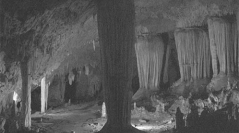

 Comptes Rendus Palevol
10 (4) - Pages 271-278
Comptes Rendus Palevol
10 (4) - Pages 271-278The colonization of Madagascar by man is an active subject of scientific debate. Until recently the oldest evidence of humans on the island dated to a few centuries BC or AD from sites located in the South-West of Madagascar. The discoveries at Anjohibe, about 1500 years older, indicate an early colonization of the North-West of the island. This region is closer than two of the shortest routes from Africa or Asia. The discoveries are not archaeological artefacts but cut marks on bones of subfossil dwarf hippopotami. These observations indicate that the coexistence of humans with extinct subfossil faunas has been much longer than previously thought.
Madagascar, Cut marks, Human colonization, Human-subfossil coexistence